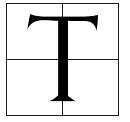How Japan’s Martial Arts Emerged From the Clash Between Tradition and Modernity
Creating Traditions
 Today, millions of people around the world practice a Japanese martial art like Aikido, Judo, or Karate. In popular culture, they represent not just a syllabus of techniques and training methods but a connection to the warriors of the past like the Samurai or the Ninja, and martial traditions like Bushidō.
Today, millions of people around the world practice a Japanese martial art like Aikido, Judo, or Karate. In popular culture, they represent not just a syllabus of techniques and training methods but a connection to the warriors of the past like the Samurai or the Ninja, and martial traditions like Bushidō.
Their history is often opaque. Gichin Funakoshi, the founder of the Shotokan school of Karate, wrote in Karate-do Nyumon that researching the early history of the art was like trying to “catch hold of clouds”, and this is true of all Japanese martial arts. Also, what history there is has often been embellished for cultural, social or political purposes.
For example, there are many schools around the world teaching Ninjutsu, the martial arts of the Ninja. But the Ninja never existed, at least in the form of black-clad assassins from Iga Province climbing castle walls and silently striking down enemies with shuriken throwing stars. The Japanese characters for ninja or shinobi (depending on how they are read) are used in the histories simply to refer to anyone carrying out any type of secret or covert operation. For example, Shinchō-Kō ki, written by one of Oda Nobunaga’s followers, records that warlord Toyotomi Hideyoshi…